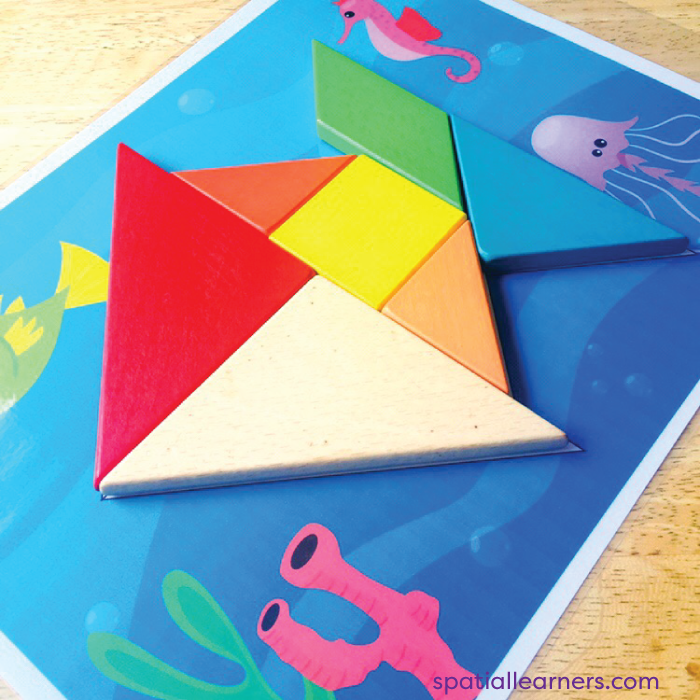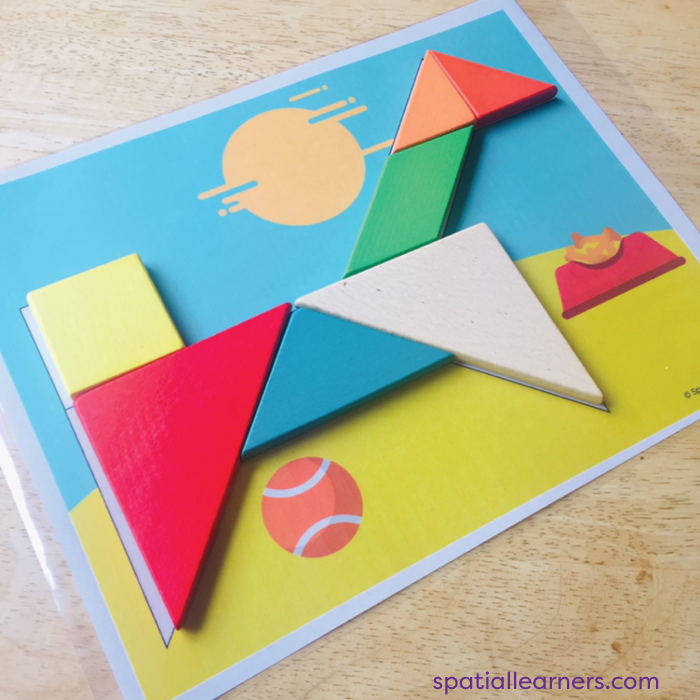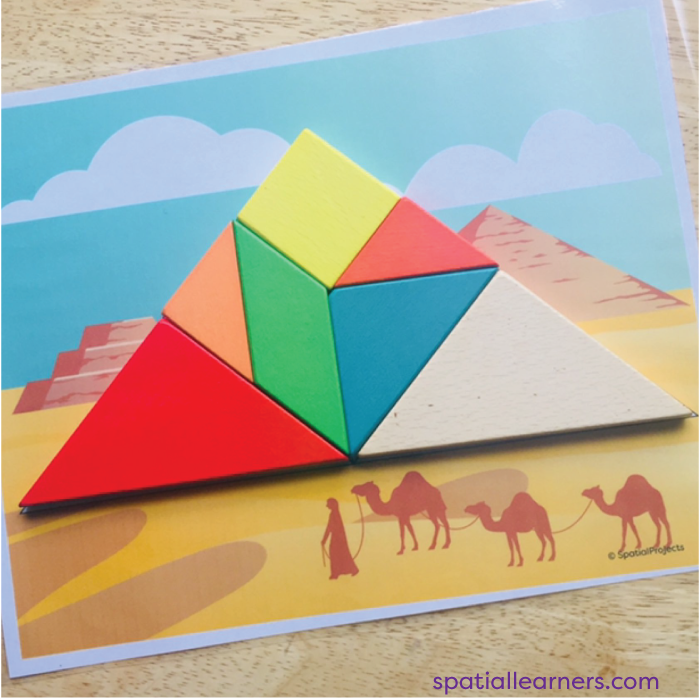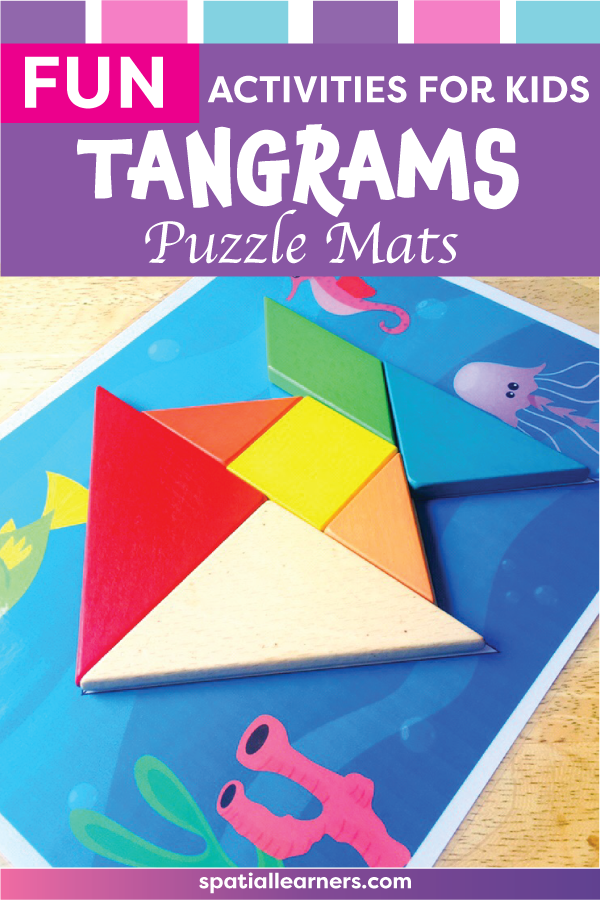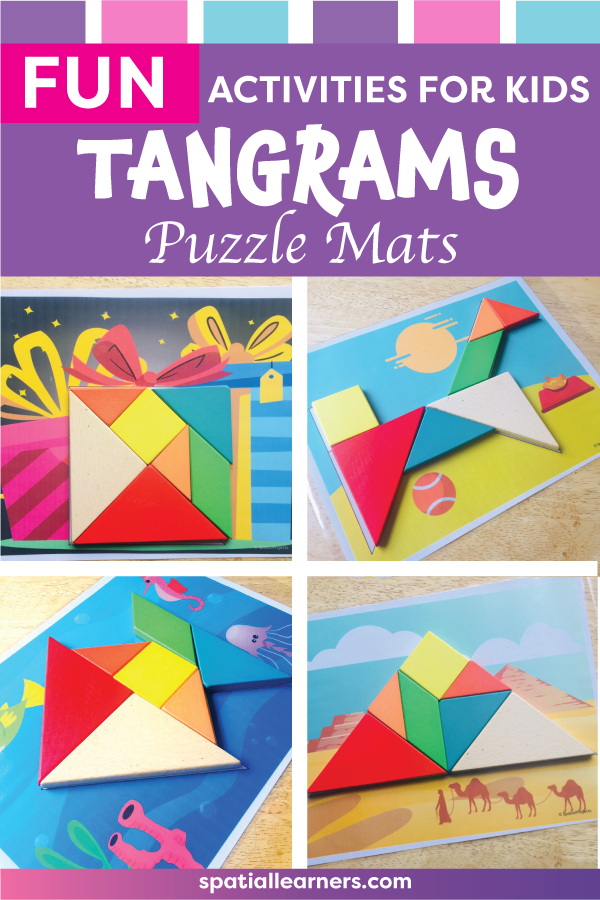Tangrams
"The tangram is the opposite of a jigsaw puzzle. Instead of fitting the pieces together in only one way, the seven tangram pieces can be arranged to make a great number of different figures."
- Bohning, G. (1997)
- Bohning, G. (1997)
What is a tangram?
A tangram is a traditional Chinese puzzle that consists of seven pieces called tans. The seven pieces include one square, one parallelogram, and five triangles. Arranged correctly, the puzzle pieces can be fitted together to create a larger shape. They can form a square, a triangle, or a rectangle. They can also form complex shapes such as helicopter, house, or rocket ship.
Tangrams are great for enhancing spatial reasoning, learning geometry, and improving fine motor skills. They are fun and meaningful puzzles that can be incorporated into math lessons and activities. Aside from math teaching, tangrams can also be used to enhance creativity and promote divergent thinking. For example, two children will create different designs for a dog tangram puzzle. This is great because there are really multiple ways of creating a dog puzzle and there is not just one correct way of designing it.
Using Tangrams
Observe the target shape. Recreate the shape using all the seven pieces. The rules for solving tangram puzzles are:
(1) All seven pieces must be used.
(2) The puzzle pieces must touch, but not overlap.
(3) The puzzle pieces may be rotated and/or flipped to form the target shape.
(1) All seven pieces must be used.
(2) The puzzle pieces must touch, but not overlap.
(3) The puzzle pieces may be rotated and/or flipped to form the target shape.
TangramS: FUN WITH PUZZLEsCheck out this packet which contains 35 tangram puzzles that you can use in your spatial learning centers, early finishers station, and team games.
The two sets can be used at the same time to provide differentiated options for different students. Tangram Puzzles Set 1
|
|
❤️ Did you enjoy this article? Save, pin, and share! Choose one from the following images.
Thank you so much for reading!
Lots of love,
Ruby Jane ❤️
Lots of love,
Ruby Jane ❤️
